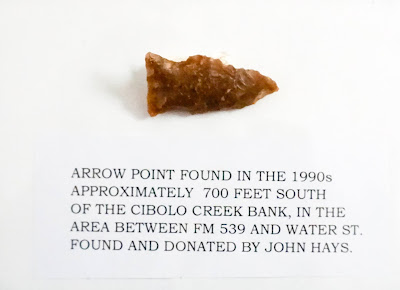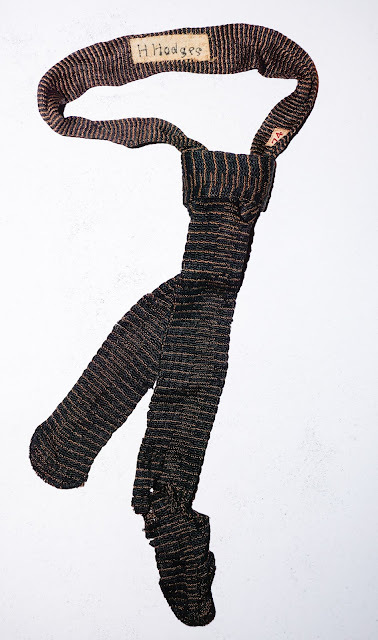On Another Point
The history that people remember most about Sutherland Springs is either the most recent tragedy surrounding the shooting at First Baptist Church or the heydays of the Sutherland Springs Hotel and Olympic-sized swimming pool that attracted guests from all over the United States, Mexico, Canada, and England in the early 1900s. However, the draw of the Cibolo springs extends far beyond recorded history.
Sutherland Springs Historical Museum has a few points to illustrate this fact. One of these points was found by John Hays.
Another was found by Betty Jo Sloan by Gunn Branch Creek, when she was nine years old.
Several more were donated by Fred Anderson. He found them on this property between E. 1st and E. 2nd Streets.
Still others were donated by Beulah Wilson.
There was an archeological dig at the Biesenbeck property near Cibolo Creek in the summer of 1997, sponsored by the Archeology Department at the University of Texas, San Antonio. I suppose those artifacts are still under review at UTSA. David Nickels wrote his dissertation on the Biesenback Site — The Biesenbeck Site (41WN88): A Case Study in Diet Breadth, University of Texas at San Antonio, 2000.
In an article in the Central States Archeological Journal of January 2001, Leslie Pfeffer describes a site focused on a sand pit near the creek. Artifacts from this site started showing up in collections around San Antonio in 1988. According to the article, Gregory Perino, at that time one of the foremost authorities on Native American artifacts, felt that the Cibolo Creek Site may have been the most continuously occupied site in our country, showing evidence of occupation for 11,000 years. Dwain Rogers, the #1 artifact authenticator in Texas and perhaps in the United States, was impressed with the unique archeological record that the Cibolo Creek Site presents, noting that "it exhibits point types and materials that are found from virtually every geographic zone in Texas: the east Texas woodland, the Gulf Coast, south Texas, the High Plains, and central Texas." Here are some of the finds during that time.
In my research focusing on the location of the Rancho del Paistle, I uncovered a couple of interesting maps that demonstrate the presence of Native Americans in this area.
An 1836 Texas Revolutionary Map indicates that there was a Tonkawa community on the east side of Cibolo Creek.
In his journal, Massanet describes "an arroyo with running water. The water of this arroyo was hot and salty; within the arroyo and from the same water was a rock, which through an opening had beautiful cold water. This day they walked four leagues and Massanet named this place San Felix because it was his day and because it was a happy day with many buffalo (cibolo), chicken, fish and cold water. The Indians call this place Populacsap."
Do you have your own stories passed down through the generations about those who lived in this area before? We would love to hear your stories.
















Comments
Post a Comment